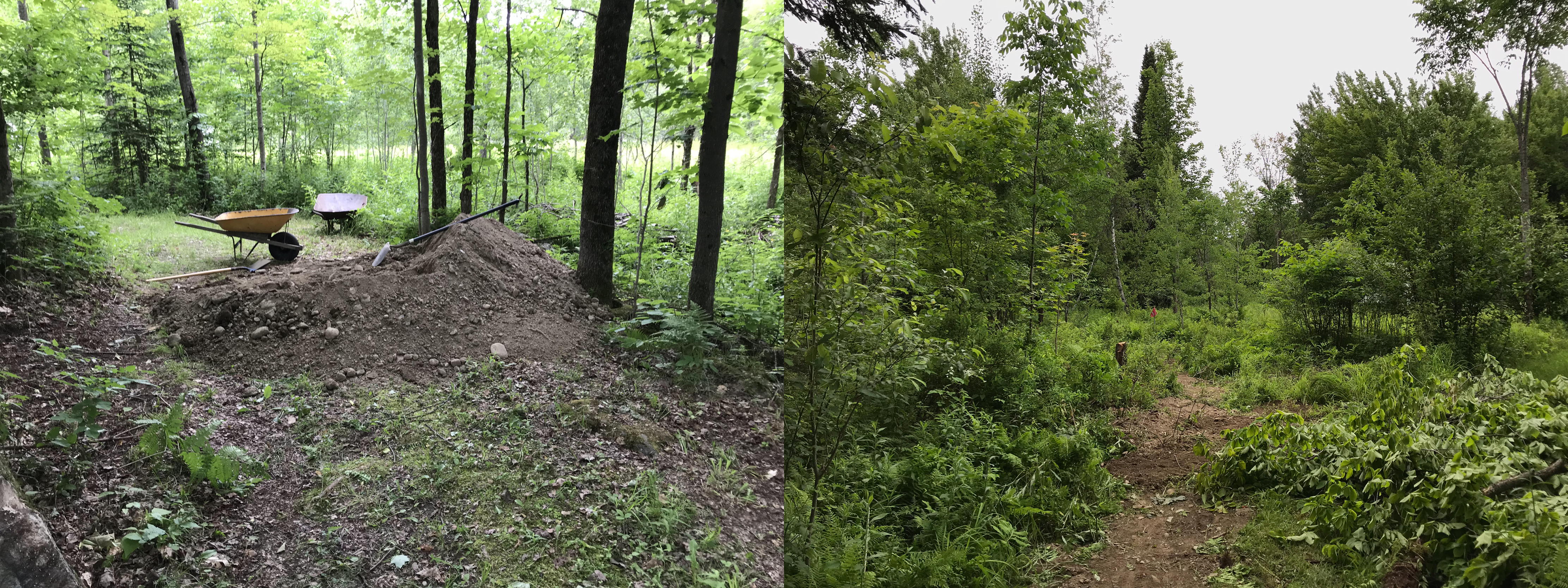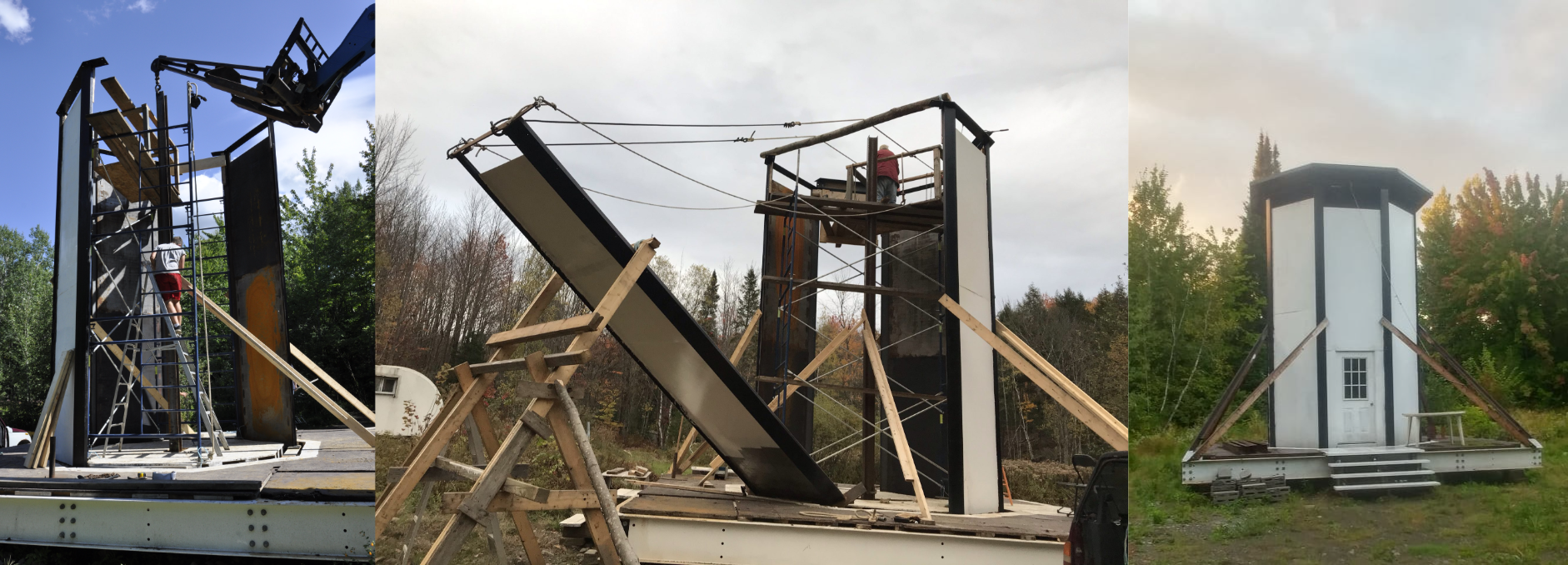20m Radio Telescope (Under Construction)
The 20m Radio Telescope is a fully-steerable single dish currently under construction in Southern Quebec. The telescope is designed to bridge a gap between amateur radio astronomy and research-grade observatories. It is intended to be used primarily for outreach and education but will aim to observe pulsars and bright FRBs. Every aspect of the telescope, including blueprints, hardware, and software will openly available to the public for use and development. The telescope will have a 400-800MHz receiver and an alt-az mount. The telescope will be the largest amateur telescope in the world.
Update 1: Groundwork
I tested the radio frequency interference in a few candidate sites and a meadow on some land behind my house turned out to be a fine location. The site is remote and reasonably radio quiet (apart from a few cell phone bands which will have to be masked out later). However, the challenge is that there is no electricity, running water, or even road to site. Over the summer, I built a road to site so that concrete trucks and cranes can access it. I also cleared the trees and brought in gravel to level the ground where the telescope will be built.

Update 2: Steel Base
In order to tilt the dish, it is necessary to build a tower almost 10 meters tall. To ensure the tower is stable, it will sit on a heavy-duty 7x7 meter steel base.

Update 3: Foundation
To add stability to the telescope and ensure that it can steer extremely smoothly, a large foundation is necessary. The 90 ton foundation is donut-shaped with rectangular cross section and will provide direct support to the tower.

Update 4: Tower
The octagonal tower will be used to raise the dish 10 meters off the ground and also to house the data processing electronics. The tower walls were raised by a combination of crane and manual labor. A temporary roof was built on the tower as the interior was being finished.
